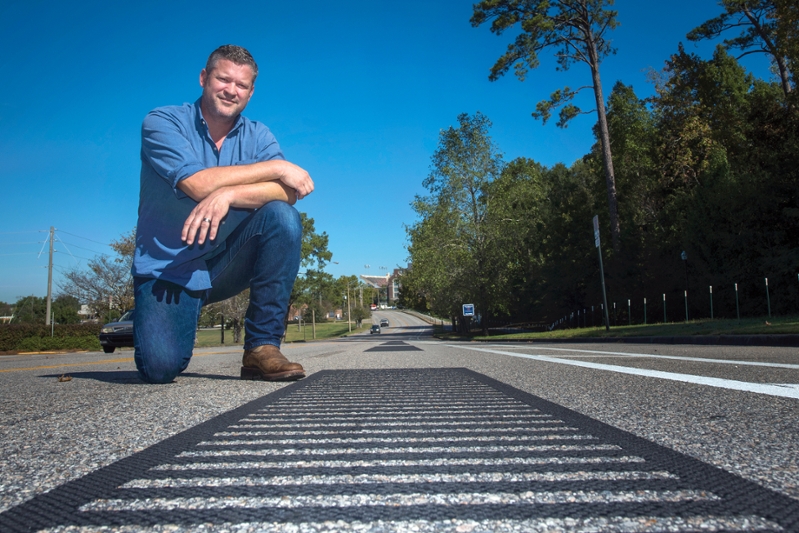
Is anyone else craving a bit of fun, lighthearted news these days? The National Center for Asphalt Technology at Auburn University delivers by sharing the making of one of the world’s few “musical roads”.
A section of Donahue Drive, located between Len Morrison Drive and West Sanford Avenue in Auburn, Alabama, now has strategically located rumble strips that play the first 7 notes of Auburn’s fight song, “War Eagle”, as drivers head toward campus.
There are only a handful of musical roads around the world. The first musical road was created as part of an art project in Denmark in 1995. The other two musical roads are located in the U.S. One, in Lancaster, California, plays “The William Tell Overture” and the other, along Route 66 in New Mexico, plays “America the Beautiful”.
The Making of a Musical Road
The musical road in Denmark used raised pavement markers to produce the sound, whereas the two musical roads located in the U.S. rely on grooves cut into the pavement.
Rumble strips are normally located at the edge of a road to keep drivers alert in the event they stray from their lane.
The musical road in Auburn is the first musical road to use a surface application material. The idea for Auburn’s War Eagle Road cam from Auburn engineering alumnus Tim Arnold.
Arnold wanted to “develop an improved method that would fit the project’s requirements of strength and durability while being safer, more durable, better sounding and, of course, non-destructive” to the pavement’s service life.
He worked with NCAT to test DOT-approved marking tape affixed to the pavement surface on an auxiliary road at NCAT’s test track.
“After determining that trial tape could work in the field, it was tested under simulated traffic conditions,” reads NCAT’s blog post. “Accelerated laboratory friction testing equipment—developed at NCAT—was used to test two additional adhesive tapes. The lab results indicated that the adhesive tapes could last between 11 to 18 thousand revolutions in the NCAT Three Wheel Polishing Device, which is roughly equivalent to 33 to 54 thousand single tire passes.”
Arnold and colleagues from the facilities management and engineering departments produced, cut and applied 36 pieces of surface application material to the pavement surface in October of 2019.
The Exact Science of Musical Roads
The definition of sound is “vibrations that travel through the air or another medium and can be heard when they reach a person’s ear.” A musical note is comprised of sound vibrations at a particular frequency (for example, an ‘A’ note vibrates of 440 Hz).
The first seven notes of “War Eagle” are comprised of the following notes: F, D, C, Bb, Bb, G and F.
“A complete mathematical model is used to determine the exact number of elements and necessary spacing on the roadway to make the right frequency of each note,” reads the blog. “An automobile driving across these physical disruptions in the road can then recreate a musical tune via the vibrations, which can be heard in (and around) the vehicle.”
Musical Roads: More than a Gimmick
After Arnold had run the calculations for the initial field tests of the surface applied material on NCAT’s test track, the speed limit on Donahue Drive was changed from 45 mph to 35 mph.
The speed limit was changed when the road changed from four lanes to two lanes with a center turn lane and added bike lanes.
Since traveling speed changes the vibrations, this adjustment to the speed limit required Arnold to recalculate his results. There is even hope that musical roads could encourage the traveling public to drive at the posted speed limit.
“The driver-awareness and safety and qualities might also prove valuable to state departments of transportation, school or hospital zones, and construction crews who could benefit from the semi-permanent, non-destructive characteristics of the application,” said Arnold, who has a patent on the idea of creating a surface applied material fabricated prior to road installation. “I’m hopeful that many other universities and towns large and small will be excited to celebrate their local culture with a musical road of their own.”